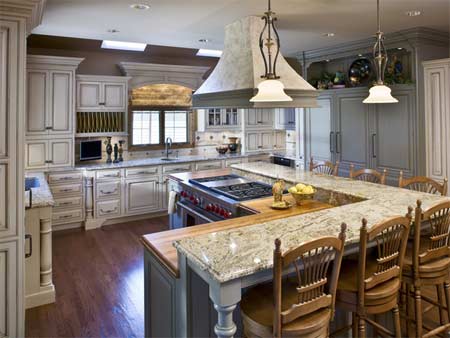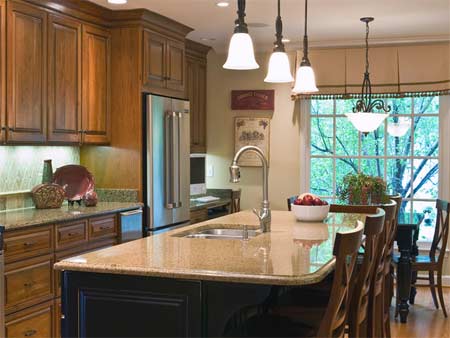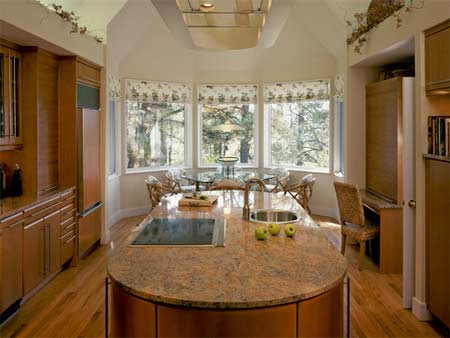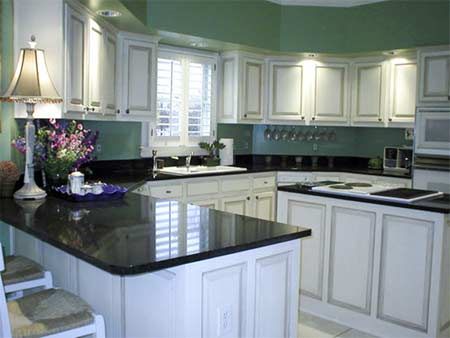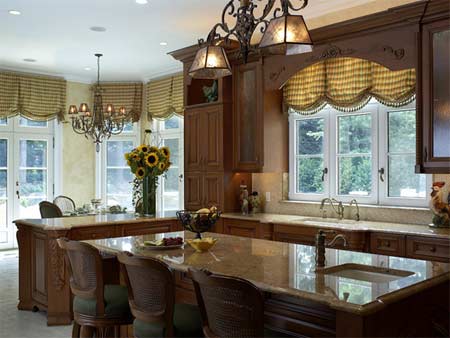Window treatments for a traditional kitchen
Spruce up those windows to make your kitchen more attractive with six easy-to-do ideas.
Keep it minimal
Strip away heavy window coverings and replace with simple shades. One path to less fabric is using an upholstered cornice or a flap valance. If you can't find something you like - it's easy to make your own.
Lighten up
Natural light in the kitchen is essential. Pleated shades offer a privacy treatment and still allow plenty of light.
Trendy looks
If you're using fabric, make sure it's in a contemporary tone. The terracotta shades are very 'in' mixed with greens, blacks and
gold. You can also mix cotton fabric prints, either within a treatment or coordinating a print in the valance or cornice with another print on the cushion seats or place mats.
If your kitchen is particularly tiny, then light, cool colours can make it look larger and brighter, while dark, warm colours can make an oversized kitchen more inviting.
Textured window treatments
Another hot trend is Roman shades made of rattan, bamboo or other natural fibres: They add visual interest with their texture, but still roll up smoothly like the Roman shades of old.
Filter light
Too much direct sunlight is also an issue in kitchens since it makes it hot and unpleasant to work in. Simple wood blinds or woven wood shades will filter the light without looking too heavy. For light control, blinds and shutters offer the most options, since you
can tilt slats or louvers to allow in just the amount of light you
want.
Consider curves
There are typically lots of straight lines in the kitchen - the cabinets, the appliances, the counters - everything is straight or square. It's a good idea to add a window treatment with soft curves to open the space up, especially in a small kitchen.
Arching a valance is a good option, particularly over the sink. Other options include a curved cornice, a box-pleated valance with a curved line along the bottom or an Austrian blind that falls from pleats to gentle swags along the bottom.
Measure twice - cut once
Measure more than once, to make sure you’re covering all your bases.
via scripps networks


